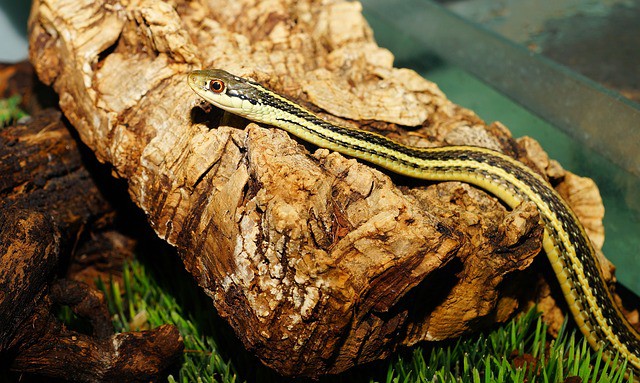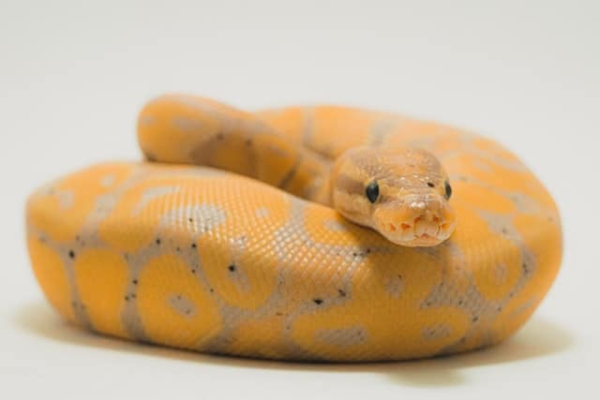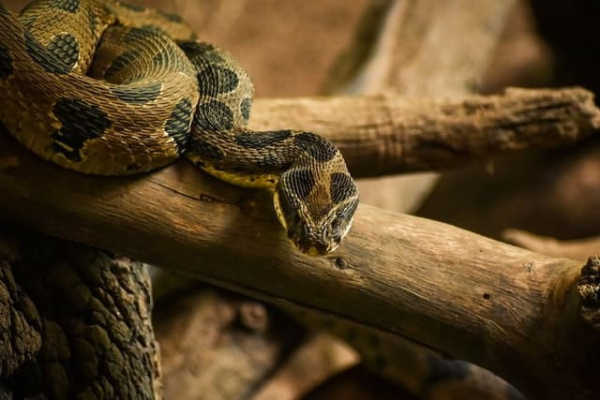
Snakes are reptiles that arouse perhaps the most extraordinary emotions. Primarily for one reason: some of them have a dangerous weapon – the venom apparatus. Various adventure books, movies, and legends have reinforced the stereotype of the snake: if venomous, it is known, one bite, and you’re dead; if not venomous, it is 100% a huge anaconda, ready to strangle you, rip you apart and devour you.
[toc]
The garter snake is found over a vast area, stretching from southern Canada, across the United States, and into northern Mexico. Different subspecies inhabit different areas.
A small snake is recommended for beginners. It practically never bites; if it does, the bites are entirely painless. Stockings can be fed with fish, frogs, tadpoles, snails, earthworms, and insects – so it is an alternative for those who do not like to provide snakes with mice. It comes in different colour varieties.
The snake is relatively strongly associated with the aquatic environment. It rarely shows aggression and can be easily tamed, and even untamed individuals are very rarely bitten. When captured, it defends itself by shooting out of its cloaca a foul-smelling, musk-scented substance mixed with faeces.
During the winter hibernation period in the wild, garter snakes gather in huge groups of up to several hundred individuals.
Appearance

A small species of snake with a slender body. Usually, on a darker, dark brown or black (rarely olive or greenish) background, three light, narrow stripes run the whole length of the body. Several subspecies have slightly different colourations, reaching different sizes and inhabiting other areas.
These stripes may be white, yellow, red, or blue depending on the subspecies. You can also find albino, melanistic (all black), and spotted individuals without stripes in the wild.
In amateur breeding, several colour varieties have been created based on subspecies and their mutual crosses. Females are always larger and more corpulent than males. Body length is about 100 cm. They live up to 20 years.
Environment and lifestyle

Mostly found in humid areas such as marshes, river and stream banks, bogs, swamps, and moist forests. A large number of hiding places and an abundance of food encourages it to inhabit suburban areas, feral gardens, and even inner-city parks,
and even inner-city parks.
There are at least small reservoirs where an amphibian breed of fish live. It is active mainly at dawn and in the evening and at night, spending the day mostly near its hiding place, basking in the sunlight. In addition, the proximity of humans is conducive to less pressure from predators.
Food
The staple diet of garter snakes is fish and amphibians (usually tadpoles and frogs). Prey is usually not strangled but swallowed alive, starting with the head. It supplements its diet with crustless snails and earthworms.
How do venoms work?

Snake venom is a mixture of very diverse substances, mainly proteins, and peptides, which make up about 90% of its dry weight. Their effects vary widely. Some of them lower blood pressure, others decrease blood clotting, degrade cell membranes, block the transmission of nerve impulses, and many others.
We can divide them into three large groups: cytotoxins, neurotoxins, and haemotoxins. However, the boundaries between them are not very rigid and are more indicative of the predominance of one type of toxin in the venom than of exclusive action. For example, viper venom is primarily cytotoxins, but neurotoxins are also present.
- Cytotoxins – This group of toxins causes a rapid breakdown of cells resulting from damage to their cell membranes. The reaction usually involves a burning pain at the bite site accompanied by progressive swelling (which may increase for up to two to three days). Tissue necrosis is also common, especially if the bite was to the finger. In addition, the kidneys and circulatory system may be damaged. This type of toxin is characteristic of the venoms of such snakes as the hissing viper (Bitis arietans), the gaboon viper (Bitis gabonica), many species of cobras (Naja mossambica, N. nigricollis, Haemachatus haemachatus), and the riffles (Atractaspididae).
- Neurotoxins – The main function of these compounds is to block the transmission of nerve impulses. Neurotoxins act in a wide variety of ways, including blocking the secretion of neurotransmitters, their receptors, or inactivating the neurotransmitter before it reaches the actual receptor. They can also block ion channels in cell membranes preventing the cell from transmitting the received signal. Symptoms of neurotoxin poisoning may include pain at the bite site, rapid sweating, visual disturbances, difficulty breathing, trouble swallowing, and drooping eyelids. Such toxins are prevalent in the venoms of treecats such as Haemachatus haemachatus, mambas (Dendroaspis sp.), Cape cobra (Naja Nivea), and forest cobra (Naja melanoleuca), and spotted bundle (Pelamis palustris). Some vipers, such as the Berg’s viper (Bitis Atropos), also have venom containing a sizable fraction of neurotoxins and cytotoxins.
- Haemotoxins – These compounds are responsible for a decrease in blood clotting. Haemotoxins reduce the number of platelets and also eliminate fibrinogen, an important protein in the clotting process. In addition, they weaken the structure of blood vessel walls, especially capillaries, which leads to extensive internal bleeding. Usually, the bite is not accompanied by pain, and often there is no swelling. Haemotoxins are slow-acting compounds, and it often takes several hours before the first clinical symptoms appear. Haematotoxic fractions are also present in the venoms of many vipers, such as the hissing viper and the Gaboon viper. Snakes whose venoms contain these toxins include boomslang (Dyspholidus typus) and Thelotornis sp.
Are garter snakes dangerous?

According to Live Science, almost all garter snake subspecies are classified as harmless. These tiny, innocuous snakes are generally considered non-venomous and won’t usually bite unless thoroughly provoked. However, if handled improperly, garter snakes are prone to discharge musk or defecate when handled.
Be that as it may, many choose to keep garter snakes as pets. Garter snakes make for decent pets and become accustomed to handling rather quickly, though they are considered “wrigglier” than most snakes. They also don’t require rodents for feeding and can survive on small fish in captivity.
Are garter snakes poisonous?

Unlike vipers, rattlesnakes, and cobras, garter snakes don’t possess any venom. According to Terminix, some subspecies do have enough of the necessary toxins in their saliva to be considered venomous.
While they are not technically poisonous, garter snake bites can cause minor swelling and itching in humans, and some people have shown allergic reactions in the past, though it is rare.
Breeding
Mating usually takes place shortly after awakening from hibernation. The snakes then form numerous clusters, usually with one female trying to mate several males that follow her. About 2.5-3 months after copulation, the female gives birth to several young (up to 40 in the record).
Honeyfish in a terrarium

Garter snakes are relatively small snakes that do not tend to climb. For an adult pair, preparing a terrarium at least 100 cm wide is advisable.
The height is not particularly important. However, access to water is extremely important. Some terrorists decide to keep garter snakes in an aqua terrarium. This is not necessary, but the snakes should have access to a tank in which they can completely submerge themselves.
You can plant the tank with live plants, but they must be relatively hardy species. Ensure access to branches and twigs for the animals to lounge on.
It is also necessary to provide hiding places, e.g., from overturned flower pots. The terrarium should be well ventilated and, at the same time, protected against the potential escape of the garter snake. Optimal conditions are:
- tank temperature of 20-30°C during the day and 18°C at night;
- the humidity of approx. 60%;
- lighting in 12-hour cycles.
How often do bites occur?

Many countries do not keep detailed statistics and estimating the actual number of accidents is difficult. Estimates by different authors can sometimes be quite disparate. Whitaker and Captain, for example, estimate that in India alone, about half a million people are bitten by venomous snakes each year, and between 10,000 and 50,000 of these cases end in death.
Sura, on the other hand, puts the number at 300,000 bites each year worldwide and 30000 to 40000 deaths. This, however, seems to be a gross underestimate since most incidents occur in underdeveloped countries. Such countries also lead the way in the number of fatalities.
India and African countries are at the forefront. In countries with higher medical services, even where highly venomous snakes are common, fatal accidents are rare. In the U.S., 7,000 to 8,000 snakebite accidents (mostly rattlesnakes) occur yearly, of which 5 to 6 result in death. In Costa Rica, snakes bite about 400-500 people (about 22-23 people per 100000 inhabitants), and several end tragically.
In Brazil, out of about 200,000 bite incidents, about 90 end in death. These numbers show that even when bitten by a venomous snake, the chances of survival are much greater than the risk of being among the unlucky.


